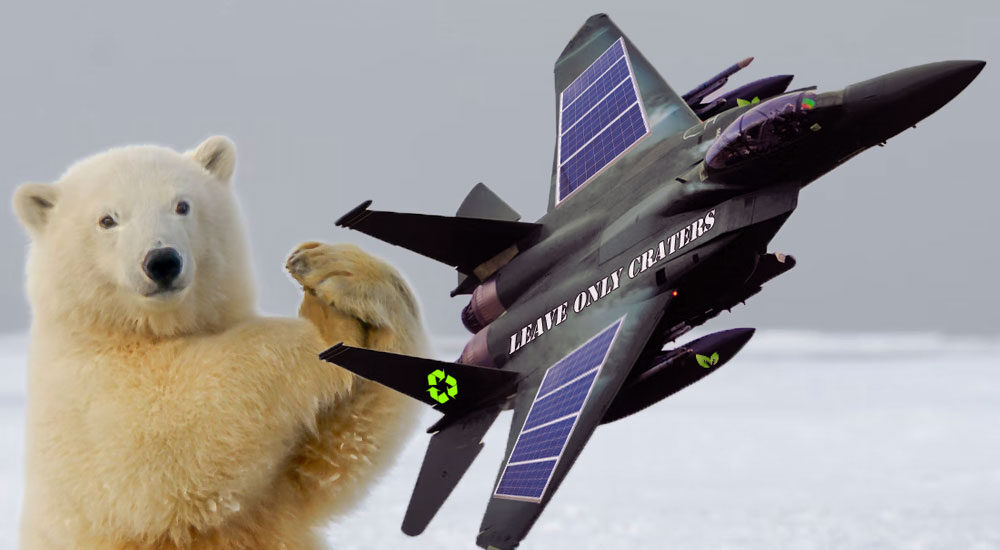By Wanda Cremo
Bethesda, MD – Environmental groups are applauding efforts by the Pentagon to honor its pledge to create a more eco-friendly fighter jet. Michael Brown, director of the Defense Innovation Unit, the Pentagon’s tech hub, revealed the new F-35 Bamboo to a crowd of science and military journalists.
“I’m proud to say that once again America is leading the way,” said Brown, “For too long have we been concentrating on stealth, firepower, and speed, at the cost of mother earth. No more.”
A giant stars and stripes curtain opened to reveal the F-35 Bamboo which sports eight fire-and-forget Sidewinder missiles, dual XM913 50mm autocannons, and ample bright green decals letting everyone know it’s environmentally friendly.
World Wildlife Fund technical advisor to the F-35 Bamboo, Julia Kranski choked back a few tears, “It’s so beautiful. I can’t wait to see it rain locally sourced ordnance down on our enemies.”
Highlights of the F-35 Bamboo:
- Forty percent of plane exterior is made of biodegradable bamboo, hemp, and reclaimed beeswax.
- Pilots now defecate into reusable canvas bags instead of disposable plastic.
- Smart thermostat lowers heat settings after pilot ejects.
- Engines temporarily shut down at stop lights.
- Rudder pedals upcycled from 1989 Ford Taurus.
- Twin solar panels allow pilot to charge cell phone, portable speaker, or other USB device without drawing from main power cells.
- Dawn dishwashing detergent automatically released upon detecting an oil leak to assist in washing ducklings caught in the spill.
- Bunker-Buster bombs also spread layer of wildflower seeds.
- Mulching blades turn pilot’s body into nutrient-rich compost upon their death.
Sierra Club representative Conor Milone is excited about the new jet, but questions some of the reasons behind it, “They’re saying all the right things, but the F-35 Bamboo isn’t all about what’s good for the environment. It’s about appealing to the new crop of fighter pilots.”
In an interview Major General Garrett Harencak, Commander, Air Force Recruiting Service said, “Times are changing. It used to be that these kids would be thrilled at the idea of becoming a fighter pilot or astronaut. Now, they want to know about our green initiatives. I talked to a recruiter just yesterday that said a prime candidate walked out of an interview when he saw a plastic straw in his trash can. And if I hear one more thing about Canada, I’m going to scream.”
In 2019, Bailey Potter, Air Force Supply Liaison Officer, told the Senate Armed Services Committee that the slow pace of inventing and adopting new green combat aviation technology was a “glaring weakness,” adding the U.S. risked falling further behind Canada, the de facto leader in sustainable air combat.
“It’s only gotten worse,” said Potter during a recent interview, “The [F-35] Bamboo is a good step, but we’ve got to do more. Everyone now looks to Canada for guidance. Our ally to the north has already phased out all jetfighters in favor of its new fleet of hemp zeppelins, and they are on target to rid themselves of gas-guzzling helicopters in the next decade in favor of warm air balloons. They’re so far ahead of us. I’m not sure we can catch up.”
Brown is more optimistic, “The F-35 Bamboo is only going to get leaner and greener. We’ve got a lot more in the works. Are we developing our own sustainable attack zeppelin? No comment.”

